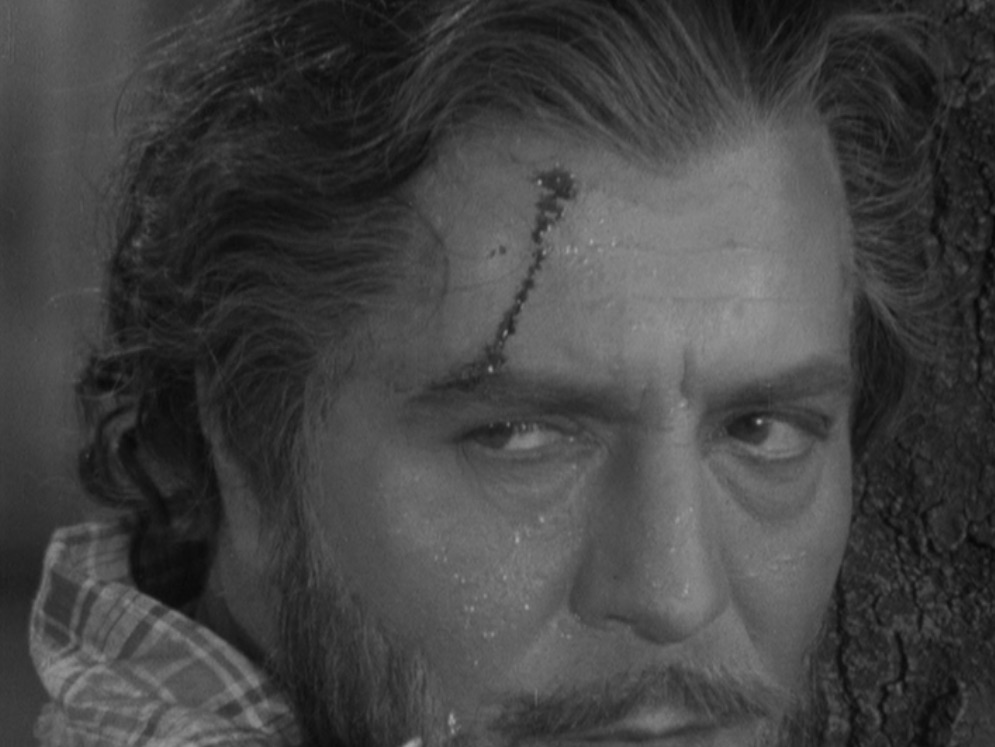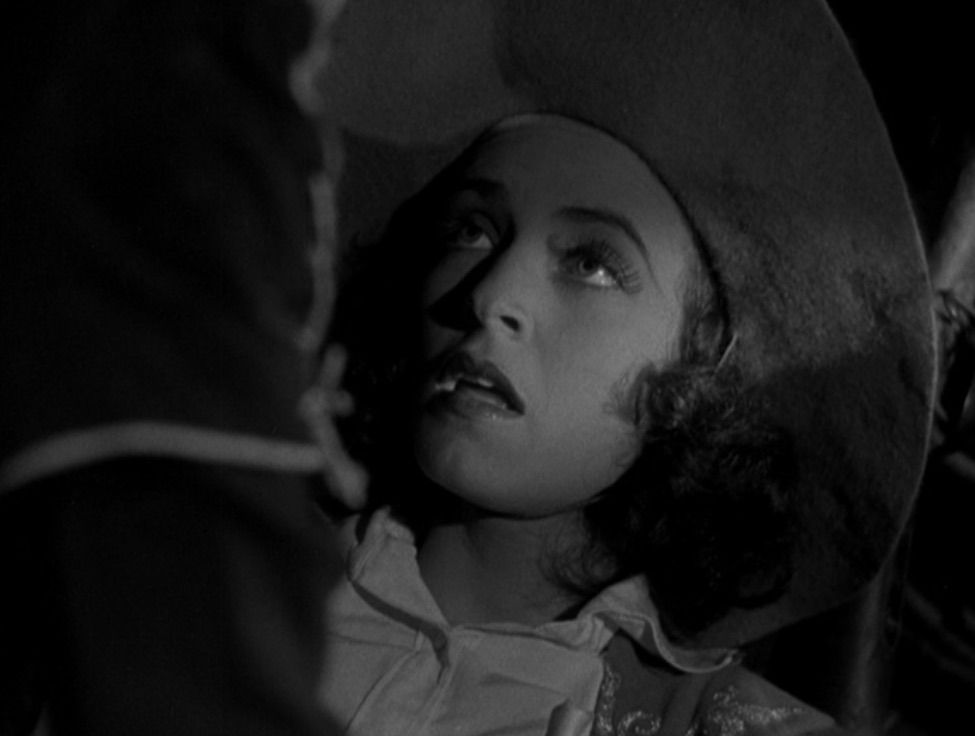Tuesday April 23, 2019
Movie Review: Robin Hood of El Dorado (1936)
WARNING: SPOILERS
It’s got a great director (William Wellman), a strong if long-in-the-tooth leading man (Warner Baxter), fascinating source material (the life of Joaquin Murrieta, the likely inspiration for Zorro), and progressive attitudes about Mexicans and the discrimination they faced. For example:
Bill: Johnny and I can run into town to see a lawyer. Must be some laws around here that protects you Mexicans.
Or:
Juanita: You are not a bandit.
Joaquin: Against the Americanos, yes.
Juanita: Do not call that banditry, Joaquin. That is what they call it. I call it the only way to get back that which was ours.
In 1936? From MGM—the most conservative of the big studios? Wow.
Shame the movie isn’t better.
10 writers
 It’s based on a book by Walter Noble Burns, who grew up in Kentucky in the 19th century, became a journalist in Chicago in the early 20th, and wrote books about legends of the Old West after he retired from reporting : “The Saga of Billy the Kid” in 1926, “Tombstone” in 1927, and this one, “The Robin Hood of El Dorado,” in 1932, which is also the year he died.
It’s based on a book by Walter Noble Burns, who grew up in Kentucky in the 19th century, became a journalist in Chicago in the early 20th, and wrote books about legends of the Old West after he retired from reporting : “The Saga of Billy the Kid” in 1926, “Tombstone” in 1927, and this one, “The Robin Hood of El Dorado,” in 1932, which is also the year he died.
What’s the problem with this one? Maybe all the newbie writers. Two of its three credited screenwriters never got credit for another screenplay: director Wellman (who got subsequent story credits but not screenplay credits); and actor Joseph Calleia (best known to me as Pete Menzies in “Touch of Evil“). The third credited screenwriter is Melvin Levy, a playwright who came to Hollywood, wrote B pictures, became a friendly witness during the blacklist (naming one name), then made a living off TV. His final credits were the shows I watched in the’70s: “The Six Million Dollar Man” and “Charlie’s Angels.” This is his first screenwriting credit.
But they had help. IMDb lists seven uncredited screenwriters:
- Rowland Brown (“Angels with Dirty Faces”)
- Peter Kyne (westerns)
- James Kevin McGuinness ( “A Night at the Opera”)
- Howard Emmett Rogers (“Tarzan and his Mate”)
- Lynn Starling (“Magnificent Obsession”)
- C. Gardner Sullivan (“All Quiet on the Western Front”)
- Dan Totheroh (“The Count of Monte Cristo”).
One assumes they were brought in to punch things up or straighten things out. Sadly, too much of the movie remains crooked and punchless.
In the newly ceded territory of California, Joaquin is boisterous and happy as he prepares to marry his love, Rosita. Per the Hollywood tradition, even though the male half of the romance is played by an Anglo, the female half can go native: here, one-named Mexican actress Margo. Per another Hollywood tradition, there’s a bit of an age gap. Gap? It’s a canyon. Baxter 47, Margo 19.
Several things happen at the wedding. An American rep shows up, someone throws a knife, Joaquin takes the blame, and so he’s banished by his rich father-in-law. Also gold is discovered at Seder’s Mill. Cue montage of everyone running toward gold.
Not Joaquin. He’s a happy farmer. But some nearby prospectors resent him—and covet his wife—and one night they show up like Trumpsters, demanding he leave.
Joaquin: Who are you to tell me this?
Prospector: We’re good American citizens, that’s who we are! And that’s who you ain’t!
He’s knocked out and comes to with the help of the two good Anglos in the movie, Bill and Johnnie (Bruce Cabot and Eric Linden), then finds his wife on the bed—dead. The real Rosita was supposed raped, and this is as close to that suggestion as the Hays Office would probably allow back then. I was surprised it allowed this much, to be honest.
His revenge against the men is quick, lethal but still honorable (with one, he makes it a fair draw), and he dismisses a grimy, admiring Mexican outlaw Three-Fingered Jack (J. Carrol Naish, Hollywood’s go-to white actor for non-white roles), although the outlaw remains admiring: “There goes a man,” he tells his compadres—a line right out of “The Right Stuff.”
I thought of another movie—just can’t figure out which—as his rise as an outlaw is seen via the price on his head: $500, $1,000, $3500. Tops out at $5k. It’s a good shorthand. His last go at a respectable life ends when he’s whipped and his brother killed by more asshole Anglos. He teams up with Three-Fingered Jack and they set up camps with happy-go-lucky Mexicans, who dance, sing, and perform horse stunts. It’s like Sherwood Forest in California.
Second half blues
Overall, though, there’s really not much Robin Hood in “Robin Hood of El Dorado.” At one point, he tries to rob from rich Mexicans, the hacendados, only to be told by another fiery woman, Juanita (Ann Loring), that they’ve all suffered. She becomes his love interest, joining the rebels, but there’s not much drama in the second half. There’s no Prince John-type villain, either. The main drama is that they accidentally kill the bride-to-be of Johnnie in a stagecoach robbery, turning the two good Anglos against Joaquin, whose men are trapped and slaughtered in Hidden Valley. Joaquin, wounded, manages to escape long enough to reach the grave of Rosita, where he repeats her final words:
I am cold. It’s growing dark. Put your arms around me.
That’s not a bad end but doesn’t make up for the lack of drama in the second half. Imagine a Robin Hood movie in which Will Scarlet’s bride is killed, he blames Robin, and leads a team of soldiers into Sherwood Forest to slaughter them all. That’s kinda this.
But it cries to be remade. We deserve a good Joaquin Murrieta biopic. Or he does.
SLIDESHOW
Baseball's Active Leaders, 2023
What Trump Said When About COVID
Recent Reviews
Everything Everywhere All at Once (2022)
Black Panther: Wakanda Forever (2022)
Doctor Strange in the Multiverse of Madness (2022)
Spider-Man: No Way Home (2021)
The Cagneys
A Midsummer Night's Dream (1935)
Something to Sing About (1937)
Angels with Dirty Faces (1938)
A Lion Is In the Streets (1953)
Man of a Thousand Faces (1957)
Never Steal Anything Small (1959)
Shake Hands With the Devil (1959)


















